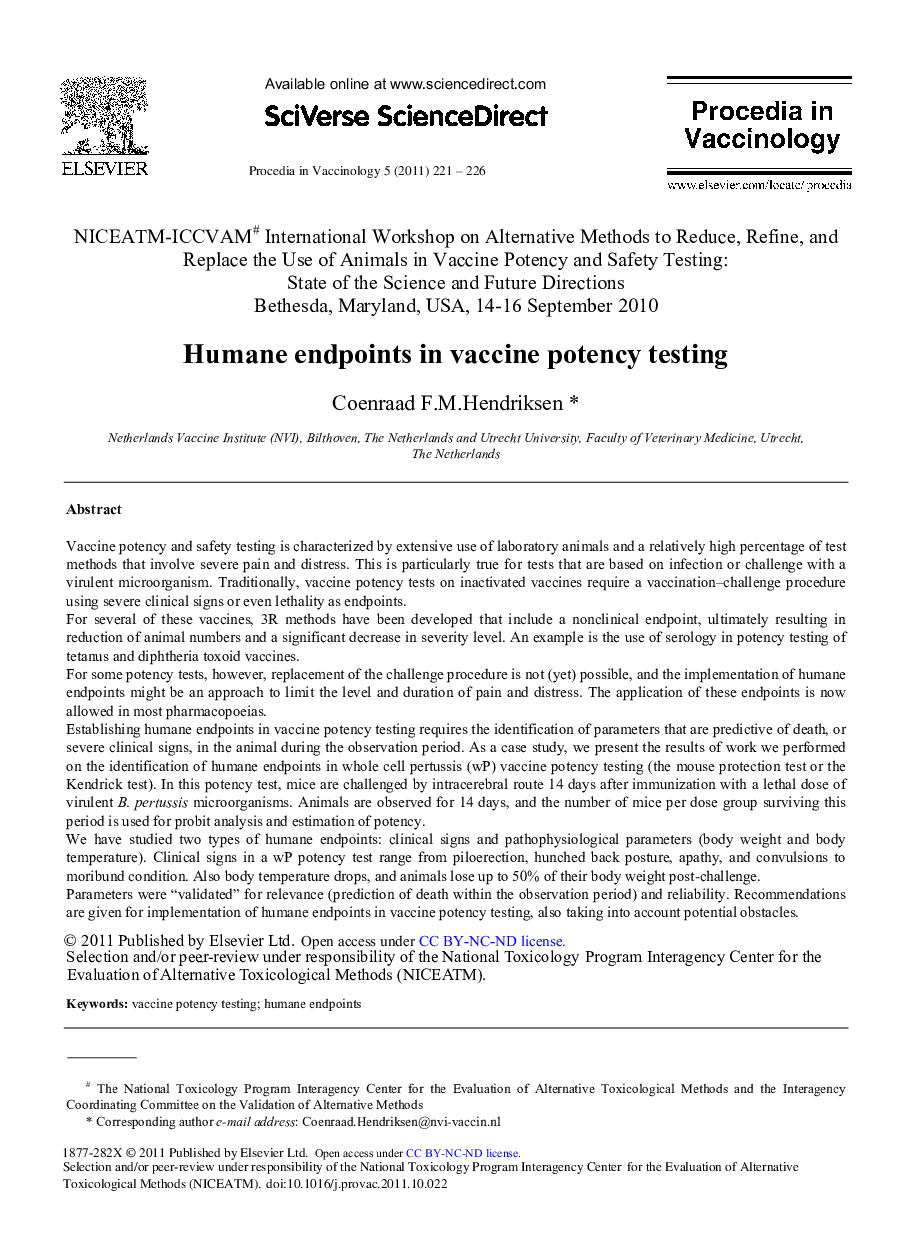| Article ID | Journal | Published Year | Pages | File Type |
|---|---|---|---|---|
| 2473727 | Procedia in Vaccinology | 2011 | 6 Pages |
Vaccine potency and safety testing is characterized by extensive use of laboratory animals and a relatively high percentage of test methods that involve severe pain and distress. This is particularly true for tests that are based on infection or challenge with a virulent microorganism. Traditionally, vaccine potency tests on inactivated vaccines require a vaccination–challenge procedure using severe clinical signs or even lethality as endpoints. For several of these vaccines, 3R methods have been developed that include a nonclinical endpoint, ultimately resulting in reduction of animal numbers and a significant decrease in severity level. An example is the use of serology in potency testing of tetanus and diphtheria toxoid vaccines. For some potency tests, however, replacement of the challenge procedure is not (yet) possible, and the implementation of humane endpoints might be an approach to limit the level and duration of pain and distress. The application of these endpoints is now allowed in most pharmacopoeias. Establishing humane endpoints in vaccine potency testing requires the identification of parameters that are predictive of death, or severe clinical signs, in the animal during the observation period. As a case study, we present the results of work we performed on the identification of humane endpoints in whole cell pertussis (wP) vaccine potency testing (the mouse protection test or the Kendrick test). In this potency test, mice are challenged by intracerebral route 14 days after immunization with a lethal dose of virulent B. pertussis microorganisms. Animals are observed for 14 days, and the number of mice per dose group surviving this period is used for probit analysis and estimation of potency. We have studied two types of humane endpoints: clinical signs and pathophysiological parameters (body weight and body temperature). Clinical signs in a wP potency test range from piloerection, hunched back posture, apathy, and convulsions to moribund condition. Also body temperature drops, and animals lose up to 50% of their body weight post-challenge. Parameters were “validated” for relevance (prediction of death within the observation period) and reliability. Recommendations are given for implementation of humane endpoints in vaccine potency testing, also taking into account potential obstacles.
